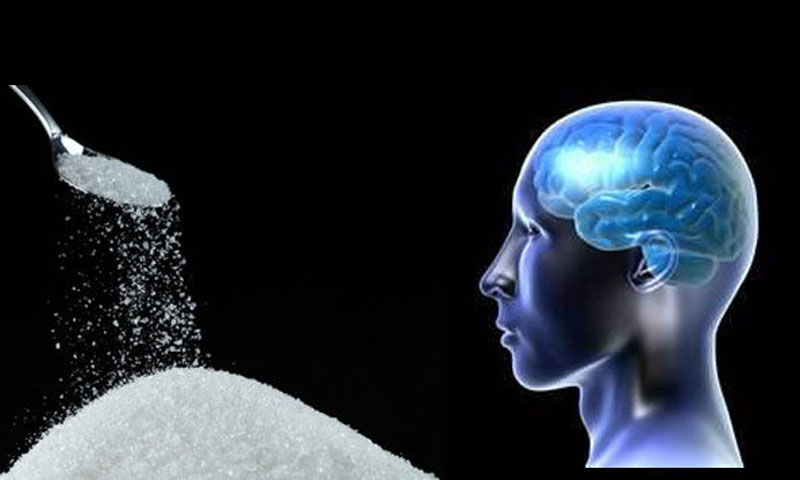
Government Advice on Nutrition has Destroyed Countless Lives the Past Few Decades, Since the War on Fat Started in the 1970s
Can We Trust Industry-Sponsored Scientific Studies and Government Agencies Approving such “Science”?
It has been well documented in recent times that “science” published in peer-reviewed journals is largely funded by corporate interests, where widespread corruption is now the norm.
Results are determined long before the studies are funded to promote special interests.
Here are some recent articles we have published here at Health Impact News exposing this corruption:
Peer-reviewed Scientific Literature Filled with Fake Science
The Corruption of Science: Who Funds Vaccine Safety Studies?
In 2015, Dr. Mercola reported that the Food and Drug Administration (FDA) regularly reviews scientific literature and finds corruption, but does nothing about it!
The FDA reviews several hundred clinical trial locations that conduct research on human participants each year in order to be sure they’re engaging in good clinical practice. But what happens when they find evidence of questionable procedures or practices?
In the most serious of cases, the FDA can classify it as “official action indicated,” or OAI. This is reserved for “severe” forms of clinical trial violations, including “objectionable conditions or practices” that warrant compulsory regulatory action, as opposed to “voluntary action indicated” for lesser violations.”
Now, if a trial had been deemed OAI by the FDA, you might assume that you’d see evidence of that when reading the results of studies based on said data. But that would be a liberal assumption. Researchers conducted a review of FDA inspection reports between 1998 and 2013.
They found 60 clinical trials that had been classified as OAI, and these trials had been used for data in 78 published articles. Out of those 78 studies, only three included mentions of the violations found by the FDA!
And we’re not talking about small, innocent mistakes. The violations included fraud, incompetence, and misconduct. This means that anyone browsing a medical journal might be making decisions based on fraudulent published studies. (Source.)
Likewise, the U.S. Centers for Disease Control and Prevention (CDC), another government agency tasked with protecting the public’s interest, has been exposed for having massive conflicts of interest preventing them from representing true, unbiased scientific studies.
Jeanne Lenzer, associate editor of the British Medical Journal, published an investigative report showing how the U.S. CDC is not honest when publishing disclaimers in their studies stating that “they have no financial interests or other relationships with the manufacturers of commercial products.”
The CDC’s image as an independent watchdog over the public health has given it enormous prestige, and its recommendations are occasionally enforced by law.
Despite the agency’s disclaimer, the CDC does receive millions of dollars in industry gifts and funding, both directly and indirectly, and several recent CDC actions and recommendations have raised questions about the science it cites, the clinical guidelines it promotes, and the money it is taking.
See:
Can We Trust the CDC? British Medical Journal Reveals CDC Lies About Ties to Big Pharma
The War On Fats: How Bad Politics Corrupted Good Science
There is probably no greater danger to public health today than the United States Department of Agriculture (USDA) and FDA’s advice and regulations regarding dietary fats.
Since the 1970s, and the infamous “McGovern Report” on nutrition which condemned saturated fats and blamed them for causing heart disease, the health of Americans has spiraled out of control, with epidemics in obesity, diabetes, cancer, and heart disease, which combined represent most causes of death today in the U.S.
This YouTube clip contains actual film footage by ABC news regarding the McGovern report in 1977, and how scientists cautioned the politicians at that time that the science did NOT support the conclusion that saturated fats and cholesterol caused heart disease.
The science, REAL science that is unbiased and not tied into industry-funded special interest groups, has exonerated saturated fats and cholesterol from causing heart disease for many years now.
If you want to research this topic for yourself, we have linked to many published studies and commentaries by physicians and other scientists over the years here at Health Impact News. Learn more:
Truth about Saturated Fats – Exposing the Cholesterol Myth
Unfortunately, government nutrition advice today still recommends a low-fat diet, encouraging consumption of carbohydrates, which includes refined sugars.

Even some in the corporate-sponsored “mainstream” media have exposed the scientific fraud regarding saturated fats in recent years, but the main reason is not because they have “seen the light” regarding scientific dietary nutrition, but because Big Food has come to realize that consumers want to return to traditional fats, such as butter and coconut oil, which have been part of the food chain for many thousands of years, and have rejected the government and industry-sponsored science trying to convince them that saturated fats are bad.
Researchers Find Corruption in Older Sugar-Industry Sponsored Studies Exonerating Dangers of Sugar and Condemning Fats Instead
For the past year, a group of researchers with the Philip R. Lee Institute for Health Policy Studies at the University of California at San Francisco (UCSF), has reviewed historical scientific literature funded by the Sugar Research Foundation since the 1960s, which gives us a great perspective on how the war on saturated fats became public policy.
These researchers at UCSF, Cristin E. Kearns, DDS, MBA; Laura A. Schmidt, PhD, MSW, MPH; and Stanton A. Glantz, PhD, have revealed how the Sugar Research Foundation (SRF) influenced Harvard medical researchers financially and otherwise to report open-ended inconclusive research that omitted a lot of conclusive negative health data.
Their first article was published in the Journal of the American Medical Association (JAMA Internal Medicine) in 2016. The title of the study is Sugar Industry and Coronary Heart Disease Research: A Historical Analysis of Internal Industry Documents.
The New York Times, which has given some press to exposing the saturated fat myth for about ten years now, led the mainstream media outlets that covered the UCSF study:
How the Sugar Industry Shifted Blame to Fat
Here are some excerpts:
The sugar industry paid scientists in the 1960s to play down the link between sugar and heart disease and promote saturated fat as the culprit instead, newly released historical documents show.
The internal sugar industry documents, recently discovered by a researcher at the University of California, San Francisco, and published Monday in JAMA Internal Medicine, suggest that five decades of research into the role of nutrition and heart disease, including many of today’s dietary recommendations, may have been largely shaped by the sugar industry.
“They were able to derail the discussion about sugar for decades,” said Stanton Glantz, a professor of medicine at U.C.S.F. and an author of the JAMA Internal Medicine paper.
The documents show that a trade group called the Sugar Research Foundation, known today as the Sugar Association, paid three Harvard scientists the equivalent of about $50,000 in today’s dollars to publish a 1967 review of research on sugar, fat and heart disease. The studies used in the review were handpicked by the sugar group, and the article, which was published in the prestigious New England Journal of Medicine, minimized the link between sugar and heart health and cast aspersions on the role of saturated fat.
Even though the influence-peddling revealed in the documents dates back nearly 50 years, more recent reports show that the food industry has continued to influence nutrition science.
NPR was another news source that covered the UCSF study in 2016:
50 Years Ago, Sugar Industry Quietly Paid Scientists To Point Blame At Fat
The UCSF researchers disclosed how a top executive, John Hickson, vice-president of the SRF at the time took on the task of finding a way to discredit the increasing studies demonstrating sugar’s role in creating bad heart health.
Interestingly, a few years later in the early 1970s, Hickson became part of the tobaccoindustry’s PR machinery with the Cigar Research Council.
“In 1972, an internal tobacco industry memo on Mr. Hickson noted that he had a reputation for manipulating science to achieve his goals,” and ” …[he is] a supreme scientific politician who had been successful in condemning cyclamates [earlier artificial sweeteners], on behalf of the Sugar Research Council, on somewhat shaky evidence.” (Source)
Hickson had come up the idea of funding their own research which would enable them to legitimately and officially discredit all the anti-health sugar conclusions. The operational key for this scheme was in Harvard, where “one of the researchers was the chairman of Harvard’s Public Health Nutrition Department — and an ad hoc member of SRF’s board.” (Source)
Their review was published in a 1967 issue of the New England Journal of Medicine.
The fact that it was published in such a prestigious journal as a scientific literature review was enough to establish legitimacy, at least enough to confuse, if not convince, with their inconclusive commentaries of “further studies needed.”
The review also maintained the now debunked lipid theory of heart disease by encouraging a low fat diet.
The “Inconvenient Truth” that Refined Sugar is Linked to Heart Disease and Cancer Was Never Published
The same UCSF team of researchers had another paper published last month (November 2017) by the open access journal PLOS Biology titled, “Sugar industry sponsorship of germ-free rodent studies linking sucrose to hyperlipidemia and cancer: An historical analysis of internal documents.”
Again, internal memos were added to the analysis of data from another SRF funded study conducted in England called “Project 259: Dietary Carbohydrate and Blood Lipids in Germ-Free Rats,” led by Dr. W.F.R. Pover at the UK’s University of Birmingham between 1967 and 1971.
The UCSF researchers managed to get the Project 259 material despite its never being published. The SRF didn’t continue sufficient funding to allow the researchers completion for publishing.
Hicks had to back out, despite a huge monetary expenditure, because Project 259, intended to prove sucrose was more beneficial than other carbohydrates, was beginning to backfire.
SRF was not getting the pro-sugar “science” they had sought.
Early reports of the animal (mouse) studies were revealing certain gut reactions from sucrose were creating excess triglyceride serum levels, an accepted marker for increased cardiac disease risks. This process also produced an enzyme that contributed to a metabolic carcinogenic cascade observed with bladder cancer.
This inconvenient truth could have helped chip away the foundation of the dietary fats dogma and pointed to real research on obesity and heart disease, but it was conveniently never disclosed publicly.
Here’s an excerpt that captures the motivational essence of the PLOS paper published in 2017 by the UCSF team:
On January 5, 2016, the Sugar Association issued a press release criticizing findings from a study published in Cancer Research using multiple mouse models that suggested that dietary sugar induces increased tumor growth and metastasis when compared to a non-sugar starch diet.
The Sugar Association stated that ‘no credible link between ingested sugars and cancer has been established.’
In contrast, this paper provides empirical data suggesting that the sugar industry terminated funding of an animal study that was finding unfavorable results with respect to the association between dietary sugars and cancer, with possible translational importance to humans.
From the 2017 paper’s abstract:
The [early Project 259] results suggested to SRF that gut microbiota have a causal role in carbohydrate-induced hypertriglyceridemia. A study comparing conventional rats fed a high-sugar diet to those fed a high-starch diet suggested that sucrose consumption might be associated with elevated levels of beta-glucuronidase, an enzyme previously associated with bladder cancer in humans. (Full text study source)
This last revelation is an example of damaging data discovered inadvertently and discarded. These are but two examples of how nutritional scientific research is easily manipulated by industry sources simply to improve its bottom line. There are more.
When it comes to the dogma that “saturated fats cause obesity and heart disease,” the sugar industry has been instrumental in keeping it alive to the detriment of national and international public health wherever this totally false saturated fat/cholesterol dogma has been “officially” adopted.
The abandoned Project 259 could have led to more research on sugar’s influence with cancer. Instead, carcinogenic comfort foods along with toxic chemotherapy drugs continues to be part of the failed “War on Cancer.”
UCSF is the same institution where Dr. Robert Lustig launched his video lecture that went viral, “Sugar: The Bitter Truth,” which explains both the business end of sugar and HFCS (high fructose corn syrup) in so many processed foods with their consequences, which are wrongly blamed on saturated fats: Obesity; diabetes 2; coronary heart disease (CHD); coronary artery disease (CAD).
Why Has the Saturated Fat and Cholesterol Myth Been Allowed to Continue?
Scottish doctor Malcom Kendrick has stated that the idea that saturated fat causes heart disease is “The Greatest Scam in the History of Medicine.”
The answer to the question “Why has the saturated fat and cholesterol myth been allowed to continue” is quite simple. Lowering cholesterol has historically been the largest revenue stream for drugs among pharmaceutical companies.
Sales of statin drugs to lower cholesterol are the top selling drugs of all time. It is a $100 BILLION a year industry.
Before its patent expired, the cholesterol-lowering drug Lipitor was the best-selling drug of all time, grossing over $140 billion, with no serious close competitors in the history of pharmaceutical drugs. The FDA did not issue warnings about the dangerous side effects of cholesterol-lowering drugs until after Lipitor’s patent expired.
One out of every four Americans over the age of 50 is taking a statin drug to lower their cholesterol.
Learn more about the “statin scam” with cholesterol lowering drugs.
.jpg)
Dr. MaryAnne Demasi’s documentary on the criminal activity of the pharmaceutical industry regarding cholesterol-lowering statin drugs sent shock waves through the mainstream media in Australia at the end of 2013.
Published in two parts on the popular news show The Catalyst, the pharmaceutical industry complained loudly after the first show, and requested the network not air the second episode, “Heart of the Matter Part 2 – Cholesterol Drug War.”
ABC Australia aired it anyway, but the pharmaceutical influence was apparently too strong, as they later announced that the network would remove the videos from their website because “they breached its impartiality standards.” All copies found on YouTube were also removed, but it has been copied widely and can still be found on YouTube. Here are two copies:
Heart of the Matter – Dietary Villains – Part 1
Heart of the Matter – Cholesterol Drug War – Part 2
How Many Lives Have Been Destroyed by Faulty Science and Wrong U.S. Dietary Advice?
The science clearly showing how the “lipid theory of heart disease,” the belief that saturated fats and cholesterol cause heart disease, is false, but that science can never be published or exposed by Big Pharma, Big Food, or the U.S. Government.
To do so would be to admit that such dietary advice, and the cholesterol lowering drugs that have earned them hundreds of BILLIONS of dollars, have been a scam and have led to increased rates of obesity, diabetes, heart disease, and cancer.
The irony in all of this is that traditional saturated fats such as coconut oil, the most saturated dietary fat one can consume, has been shown to actually be heart healthy by numerous scientific studies.
Thank God for honest researchers such as Cristin E. Kearns, DDS, MBA; Laura A. Schmidt, PhD, MSW, MPH; and Stanton A. Glantz, PhD with the Philip R. Lee Institute for Health Policy Studies at the University of California at San Francisco.
Their honest research provides the information the public needs to understand how government dietary advice is corrupt, and how to make intelligent choices when it comes to food and nutrition.
This information is increasingly being published in the alternative media, as the dinosaur corporate-sponsored “mainstream” media for the most part no longer represents the interest of the public, but instead the interest of their corporate sponsors dominated by Big Pharma and Big Food, and their incestuous ties to government regulatory agencies such as the FDA, USDA, and CDC.

 Artist’s impression of cosmic rays hitting the atmosphere. (H. Svensmark/DTU)
Artist’s impression of cosmic rays hitting the atmosphere. (H. Svensmark/DTU)








